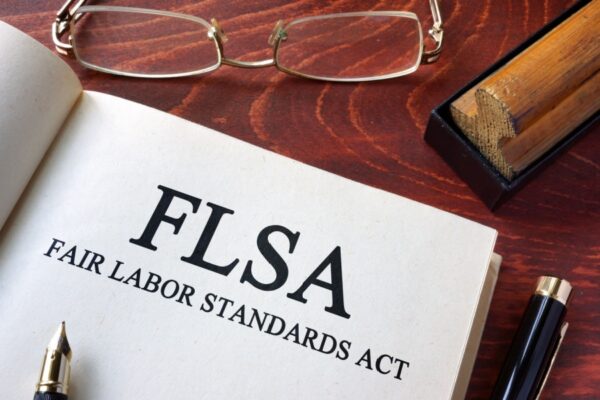Materials that have been damaged or stolen can delay or even stop a project. Criminals are drawn to valuable building materials like copper, lead, and aluminum. Thieves target even common building supplies to resell. Additionally, building materials may sustain damage while being transported or waiting to be installed on the job site. You can overcome these challenges with adequate installation floater coverage and access to helpful claims services.
What is Installation Floater Insurance?
Installation floater insurance is a specialized coverage designed to safeguard businesses during a project’s installation or construction phase. Whether it’s a small-scale renovation or a large infrastructure project, transitioning from the construction site to the final operational state can be a critical period filled with risks—installation floater insurance steps in to mitigate these risks and provide financial protection.
The materials, equipment, and machinery are highly susceptible to damage or loss during installation. This vulnerability arises from various factors, such as transportation, handling, storage, and even natural disasters. Traditional property insurance might need to adequately cover these risks, as it typically applies to fixed properties rather than items in temporary transit.
Installation and equipment floater insurance are distinct in their coverage despite falling under the inland marine insurance category. While both policies safeguard items as they are transported, they serve different purposes.
What Is Covered by Installation Floater Insurance?
Installation Floater Insurance is a specialized type of coverage designed to mitigate the risks associated with installation projects. It provides financial protection for materials, equipment, and supplies during installation, construction, or repair. Here, the covered by installation floater insurance typically covers the following:
- Materials and Supplies – Whether it’s bricks for a new building, wiring for an electrical project, or pipes for plumbing work, Installation Floater Insurance safeguards the materials and supplies required for your project. This coverage includes protection against theft, damage, vandalism, and other unforeseen incidents that could compromise your project’s progress.
- In-Transit Coverage – This insurance often protects materials and supplies in transit to the project site. The policy can cover the losses incurred if materials get damaged or stolen while transported.
- Storage Coverage – If your project requires storing materials off-site, such as in a warehouse, and these materials suffer damage due to fire, water, or other covered perils, Installation Floater Insurance can help you recover the costs.
- On-Site Coverage – This is the core of Installation Floater Insurance. It covers the materials and equipment while they are on the project site. Accidents can happen, from natural disasters like storms to accidental collisions or human errors. This insurance ensures that such incidents don’t translate into financial burdens for you.
- Equipment Coverage – Besides materials, this insurance can cover the equipment used during installation, repair, or construction. This includes machinery, tools, and specialized equipment necessary for the successful completion of the project.
- Work Delays – Some policies cover project delays caused by covered losses. This can help compensate for the additional expenses or loss of income that might result from extended project timelines.
What Is Not Covered by Installation Floater Insurance?
While Installation Floater Insurance provides essential coverage for your construction and installation projects, it’s important to be aware that certain situations and events might fall outside its scope. These exclusions help insurance providers manage risk and keep policies focused on their intended purpose. Here is what Installation Floater Insurance usually doesn’t cover:
- Pre-Existing Damage – If the materials, equipment, or supplies you’re insuring already have damage or are in a state of disrepair before the coverage begins, any losses resulting from this pre-existing damage will likely not be covered. This insurance is designed to protect against unforeseen events, not to address issues present beforehand.
- Wear and Tear – Gradual deterioration, wear and tear, or damage that occurs over time due to regular use or exposure to the elements are typically excluded. Installation Floater Insurance is geared towards sudden and accidental incidents rather than the natural aging of materials or equipment.
- Faulty Workmanship – If the installation work is not performed correctly and this leads to damage or problems down the line, Installation Floater Insurance might not provide coverage. Proper workmanship is expected, and this insurance isn’t meant to compensate for poor execution of the project.
- Intentional Acts – Any losses or damages that result from intentional acts, such as deliberate destruction or sabotage, are generally not covered. The insurance addresses unforeseen events, not situations where harm is intentionally caused.
- Contractual Disputes – This insurance usually does not cover disputes related to project contracts, agreements, or terms between parties involved. Resolving contractual issues through legal or contractual means rather than relying on insurance for resolution is important.
- Government Actions – If a government agency or authority orders a stoppage of work, imposes fines, or takes any regulatory action that affects your project, Installation Floater Insurance might not provide coverage for resulting losses. Compliance with laws and regulations is a separate aspect from insurance coverage.
- Consequential Losses – Installation Floater Insurance generally focuses on direct physical loss or damage to materials, equipment, or supplies. It might not cover indirect or consequential losses, such as lost business income due to project delays.
- Nuclear Hazards – Damage from nuclear hazards, radiation, or related events is usually excluded from standard insurance policies, including Installation Floater Insurance. Specialized coverage is required for these types of risks.
- Natural Settling or Shifting – It might not be covered if damage occurs due to natural settling, shifting of the ground, or earth movements. Separate insurance options might be available for addressing these types of risks.
Who needs floater installation insurance?
Contractors frequently buy installation floater insurance as part of a risk management plan for theft and other losses during a construction project. You might need it if you work in construction or installation, particularly in jobs like HVAC installation, electrical work, or renovation.
The contractor would receive payment for the loss, less the deductible, if your materials were harmed by fire, vandalism, or improper handling.
Homeowners and Renters
Now, you might wonder if homeowners or renters should bother with floater installation insurance. A floater policy could be smart if you own valuable items not adequately covered by your standard homeowner’s or renter’s insurance policy. Standard policies usually limit coverage for jewelry, electronics, and collectibles. If you own items that exceed these limits, a floater policy can help ensure they are fully protected, even outside your home.
Event Planners and Exhibitors
Event planners and exhibitors also stand to benefit from floater installation insurance. If you organize events, trade shows, or exhibitions where valuable items are displayed or used, this coverage can provide peace of mind. Accidents can happen, and insurance covering damages or losses during the event can save you from unexpected financial strain.
What is the distinction between Installation Floater insurance and builder’s risk insurance?
Builder’s risk insurance, also called course of construction insurance, provides construction firms, contractors, and subcontractors with financial security against accidents on a job site. Before the building supplies are delivered, contractors purchase this type of property insurance, which they maintain until the property is sold or given to the client.
Installation floater insurance is less thorough and generally less expensive than the builder’s risk. However, a builder’s risk policy might cover only some things, like HVAC and electrical systems. A contractor might need to purchase an installation floater policy from their insurance provider to be completely protected.
- Coverage Scope – Builder’s risk insurance is designed to cover entire construction projects. In contrast, Installation Floaters insurance specifically protects designated items intended for installation. However, coverage may not always align, as builder’s risk policies could exclude certain types of property or equipment.
- Cost Consideration – Builder’s risk insurance comes at a higher cost due to its broader property coverage. Conversely, Installation Floaters insurance is more cost-effective, focusing on limited materials and equipment.
- Suitable Insured Party – Builder’s risk insurance suits general contractors, offering comprehensive project protection. On the other hand, Installation Floater insurance is more suitable for specialized contractors or subcontractors, minimizing risk within the context of a larger project.
What does an Installation Floater cost?
An Installation Floater is a type of inland marine insurance, and the cost is heavily influenced by the project’s details and the property’s value. Generally speaking, inland marine insurance costs $736 annually to cover $100,000 in property with a $1,000 deductible. For every $100 of covered property, this costs $0.736. Minimum premiums of $100 or $250 are common for inland marine policies.
Are installation floaters and equipment floaters the same thing?
Installation and equipment floaters, while related concepts regarding insurance, are different. They both fall under the broader category of inland marine insurance and are designed to offer coverage for specialized situations involving property frequently on the move.
An installation floater is primarily concerned with a property that is in the process of being installed or integrated into a larger project. This could include equipment, machinery, or even fixtures that are being added to a construction site or a facility. The coverage offered by an installation floater is temporary and typically extends until the installation project is completed.
On the other hand, an equipment floater provides coverage for movable property that a business or individual may own. This coverage is not confined to a specific installation project but encompasses various types of equipment that might be frequently transported or used at different locations. This could include tools, machinery, and other items vital to business operations.
What is the procedure for filing a claim under Installation Floater Insurance?
Be prepared to do the following if you are an insured contractor who needs to file under an installation policy:
- Present evidence demonstrating the impact on the property’s value.
- Gather the data required to resolve the claim, such as estimates and inventories.
- Determine any additional insurance that might apply to the loss.
- Protect the property from future losses by strengthening it
- Inform your insurer of the damage or loss as soon as possible; the earlier, the better, so they can compensate you.
- Obtain and present evidence of the incident, being sure to record its location, time, and circumstances.
If you are a licensed contractor or subcontractor with materials, supplies, or equipment being transported or waiting to be installed, consider installing an installation floater to safeguard your property. It’s critical to ensure you have coverage in place in case of a loss because builder’s risk policies may only sometimes cover the specific supplies or tools you’ll need for your project.
An effective insurance plan for contractors and subcontractors involves analyzing the coverages for each of your projects. The requirements for insurance may change as your business develops. It’s crucial to keep up by keeping your insurance portfolio current because every project has its own unique needs.
Are you looking for a quote? Contact us at (800) 383-8283.
Material posted on this website is for informational purposes only and does not constitute a legal opinion or medical advice. Contact your legal representative or medical professional for information specific to your legal or medical needs.




